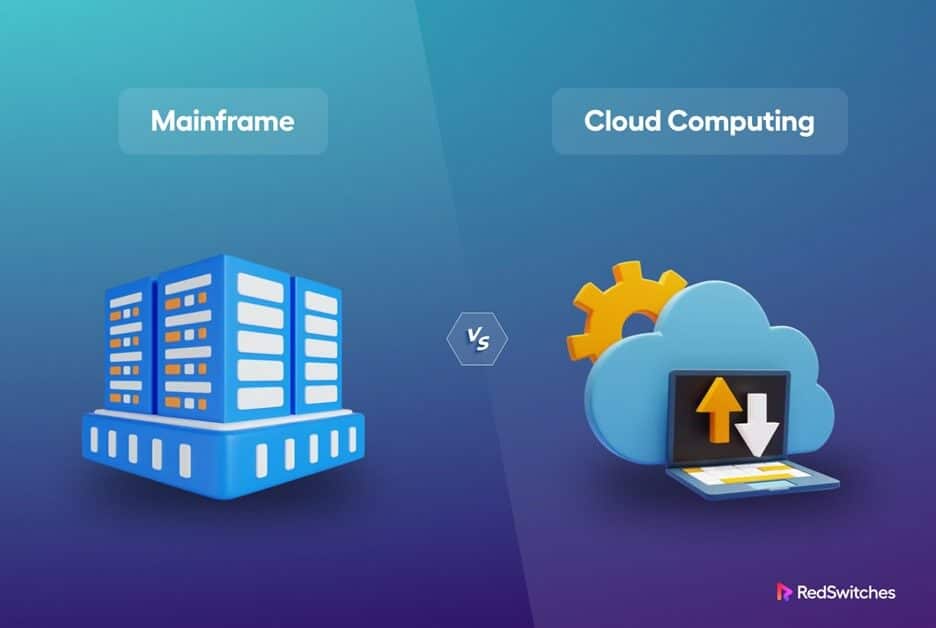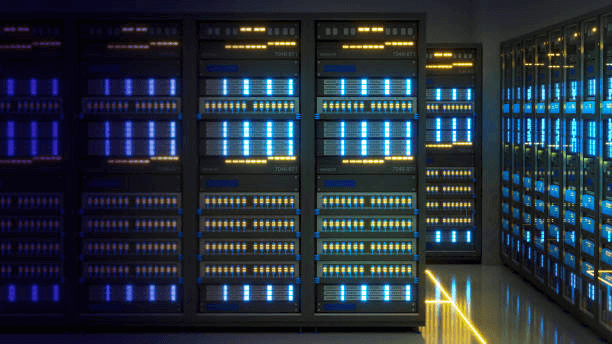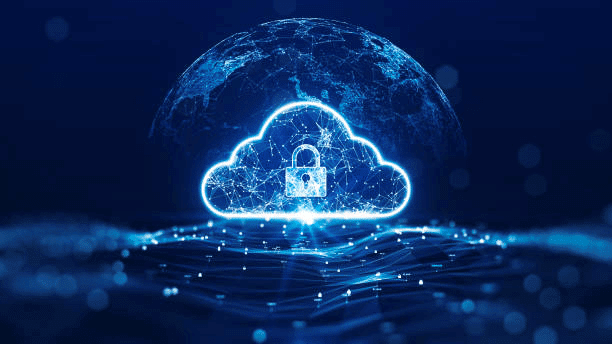Mainframe and cloud computing are the two powerhouses influencing the tech industry. These two cloud technologies are unique in their features and capabilities. You may wonder, what is the difference between mainframe and cloud computing? In addition, which one should you choose for your business needs?
Here is a sneak peek: Mainframes have been around for a long time and are the backbone of large-scale data processing. They are used in government institutions and banks. They have a reputation for reliability. Cloud computing is the new modernized tech offering flexibility and affordability solutions.
Businesses can navigate the landscape when they understand the core differences between these two technologies.
In this guide, we’ll examine the differences between these two technologies. We’ll discuss mainframe vs. cloud computing and explore their features, application, and benefits. The goal is to help you understand which computing model will suit your needs well.
Table of Content
- What Is Mainframe Computing?
- How Is Data Stored in Mainframe?
- Advantages and Disadvantages of Mainframe Computing
- What-is-Cloud-Computing?
- Advantages and Disadvantages of Cloud Computing
- Difference Between Mainframe and Cloud Computing
- Mainframe Computing Use Cases
- Future of Mainframe Computing
- Key Takeaways
- FAQs
What Is Mainframe Computing?
Mainframe Computing is a large-scale supercomputer that processes enormous amounts of data at high speeds. Some common places you can find them are in government institutions, the finance sector, and much more. Mainframes suit these types of environments because they have high processing power and provide robust security protocols.
Key Features of Mainframes
There are many features of mainframe computing, and they include:
- Processing Power: Mainframes are well-known to have the ability to process large amounts of data instantly. Not only that, they are accurate in analysis and reliable.
- Scalability: Growing businesses will find mainframes ideal because you can scale the resources on demand. So if you have large amounts of data and need a technology that can handle varying needs, mainframes will be your best bet.
- Reliability: Mainframes are well-known to be fault tolerant. It means you will experience lower downtimes in case of a disaster. The best part is their recovery is outstanding and compares to none other.
- Protection: Mainframes provide high protection measures to cloud systems. Some of the popular protection measures are firewalls and encryption. The good thing about these measures is that they comply with the law.
- Virtualization: Mainframes were the first to use this technology. It makes them agile enough in the management of workloads.
How Is Data Stored in Mainframe?
Mainframes usually store data in hierarchies using a network-based system. Some popular data storage methods in mainframes include:
- Partitioned Data Sets (PDS): A file structure stores sequential data in partitioned members. The structure enables the effective organization of members, which contain varying data types.
- Virtual Storage Access Method (VSAM): A high-performance file access method that stores large amounts of data in sequential or indexed format. VSAM offers features like data integrity and high-speed access. It is well-suited for large databases and transaction processing.
- Hierarchical File System (HFS): This system supports a hierarchical directory structure like modern file systems. It is well-suited for storing data types like text and binary files or directories. Ownership, timestamps, and permissions are also part of this file system.
- Database Management Systems (DBMS): Mainframes often use DB2, IMS DB, or IBM’s customized database management systems. The good thing about these systems is that they can store large amounts of structured data. In addition, they can also offer indexing, transaction management, and data query processing features.
- Storage Area Network (SAN): Mainframes can also use SANs for data storage. SANs are networks that provide high-speed connectivity between mainframe systems and storage devices. It allows for centralized and scalable storage solutions.
Mainframes have unique management techniques due to their specialized architecture and legacy systems. Proper understanding and expertise in mainframe data storage technologies are necessary to manage data in a mainframe environment.
Advantages and Disadvantages of Mainframe Computing
Pros
- They are secure platforms with high reliability.
- It’s easier to move the operations to virtualized environments.
- When you optimize the system, it becomes easier to merge workloads.
- Organizations that handle sensitive data will find mainframes secure because they have robust protection protocols.
Cons
- Operating them is costly, making them not suitable for startups.
- Companies need to hire professionals to run mainframe systems.
What is Cloud Computing?
Cloud computing refers to delivering computing resources over the internet, such as computing power, software, and database. The cloud service providers are responsible for hosting and managing these cloud computing infrastructures.
Cloud computing architecture, at its core, runs on virtualization. Hosting multiple virtual machines on a single host computer makes it easy. Each virtual machine runs its OS and app as an isolated environment.
The concept allows full utilization of the resources where a company can scale its virtual machines on demand.
Also Read: 6 Key Differences: Cloud vs On Premise Computing Revealed!
Advantages and Disadvantages of Cloud Computing
Pros
- It’s easier to scale your cloud resources without investing in any infrastructure.
- Businesses don’t have to worry about maintaining the infrastructure because the service provider is responsible.
- Cloud services are accessible through the internet, even in remote areas.
- It is a reliable model, and the service providers guarantee it by creating redundant resources.
Cons
- An Internet connection is a must for you to connect to the cloud system.
- It is prone to cyber-attacks and hacking.
Difference Between Mainframe and Cloud Computing
There are many common mainframe computing vs. cloud computing differences, and they include the following:
Scalability
- Mainframe computing: They are centralized systems that are enormous and robust and suited for intense transaction volumes and data processing. However, they have a drawback in scalability due to the physical limitations of the infrastructure. The only way to scale them is by adding more resources, which is time-consuming and complex.
- Cloud computing: It provides unrivaled server scaling. A service provider hosts and manages the infrastructure in a data center. The model allows organizations to scale on demand with no upfront hardware investments.
Cost
- Mainframe computing: The demand for high upfront investment in infrastructure and upkeep. They also need expertise which can raise ownership costs.
- Cloud computing: It offers a subscription model to clients where they pay for what they use. The model is cost-effective since no initial investments in infrastructure are necessary. The best part is the service providers are in charge of security and upkeep, which results in cost savings for companies.
Security
- Mainframe Computing: They are the most secure technology because their design lacks vulnerability endpoints. When technology can secure endpoints, it cannot be a target of cyber attacks.
- Cloud Computing: The cloud centralizes its protection protocols, making it vulnerable to attack. Some of the ways businesses can protect their data are by using passwords or encrypting their data.
Maintenance
- Mainframe Computing: You need an IT team to regularly maintain and upgrade the system. It means higher costs in hiring professionals since the platform is complex.
- Cloud Computing: Maintaining the system lies on the service provider. You don’t have to worry about anything as a user since you only pay for what you use.
Accessibility
- Mainframe Computing: The mainframe systems offer top-notch security than any other technology. It makes it easy to transfer tasks through the platform without the fear of data breaches.
- Cloud Computing: The cloud is easily accessible with a connection to the internet. Businesses can work in remote areas, and it improves team collaboration.
Any business wondering which technology among the two is ideal should first weigh their needs. It’s the only way they will be able to succeed.
Mainframe Computing Use Cases
Mainframes have a multitude of use cases, and these are the common ones:
- Financial Services: Mainframes suit this industry because institutions like banks can use them to host clients’ information in databases. Then, they can submit transactions worldwide in e-wallets or ATMs.
- Healthcare It is also a common model in healthcare services. Its application is in analytics, management of health records, and research. The nature of these systems makes them suitable for handling extensive health data.
- Government: Lastly, it is a standard model in government institutions. Its application is in defense systems, tax processing, and more. Their powerful protection features make them ideal for handling critical government operations and sensitive data.
As explained here, mainframes will continue playing a crucial role in large data-intensive operations.
Future of Mainframe Computing
The mainframe computing future is potent. Radical changes are happening to satisfy the modern tech and business outlook. Let’s look at some of the likely trends that could shape the future of mainframe computing:
- Continued performance and scalability: Optimization of performance and upgrading processing speed will be the main focus of mainframe vendors. It will help boost scaling in handling big data processing needs and volumes.
- Integration of hybrid and the cloud: One of the best ways companies can take advantage of these two technologies is by merging them to boost connectivity. It can help boost performance since the cloud can integrate with the existing on-premise platform without a hitch.
- Development of skills and talent: There has been a high demand for mainframe expertise in the last few years. This demand will likely continue in the coming years.
Mainframes will continue to impact most businesses. One is organizations that need high levels of performance and security for their extensive data operations.
Key Takeaways
- Mainframe architecture in cloud computing is a modern and flexible approach to computing that offers advantages over traditional mainframe architecture.
- Companies can benefit from cloud computing in several ways: robust security, scalability, reliability, cost-effectiveness, and more. It makes it a flexible option.
- With cloud computing, users get better agility and deployment, which enables organizations to evolve with current market trends.
- Cloud computing has better protection measures than the mainframe, which includes backup, encryption, and many more.
- Choosing a reliable cloud hosting provider, such as RedSwitches, allows businesses to enjoy the benefits of cloud computing without costly investments in hardware and infrastructure.
- RedSwitches can provide reliable and scalable cloud hosting services enabling businesses to focus on their main strengths without worrying about IT infrastructure.
- There are many benefits organizations can get from mainframe architecture in cloud computing. Some of these are to stay in front of trends and streamline their business operations.
Check our resources section to learn more about the difference between mainframe and cloud computing.
FAQs
Q-1) Is Mainframe a Data Center?
No, they’re not data centers but computing systems. A data center has the role of providing storage of data in a cloud environment.
Q-2) Why do Banks Use Mainframes?
Financial institutions like banks rely on mainframes because they can quickly process enormous amounts of data and are secure. They are also reliable, making them suitable for intensive workloads.
Q-3) Is Mainframe Faster?
Mainframes are faster because they’re large and have an infrastructure that supports them. That’s how they can process data in highly intensive environments.



